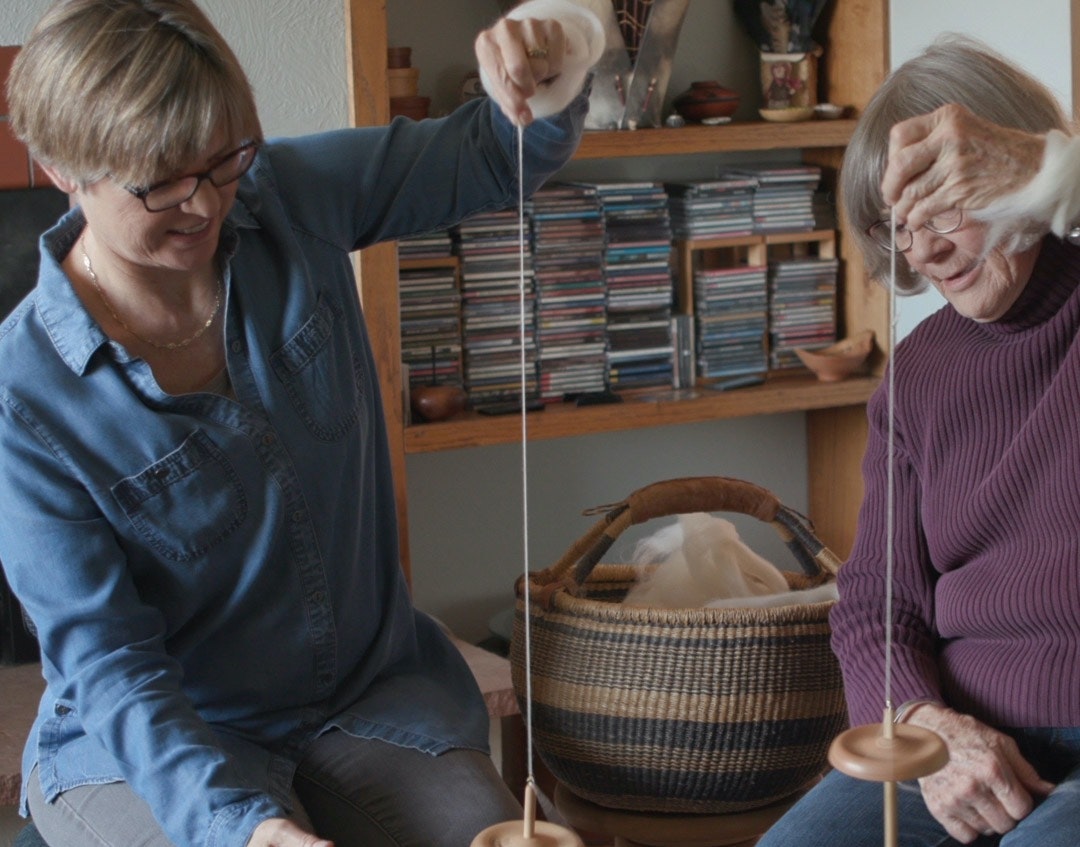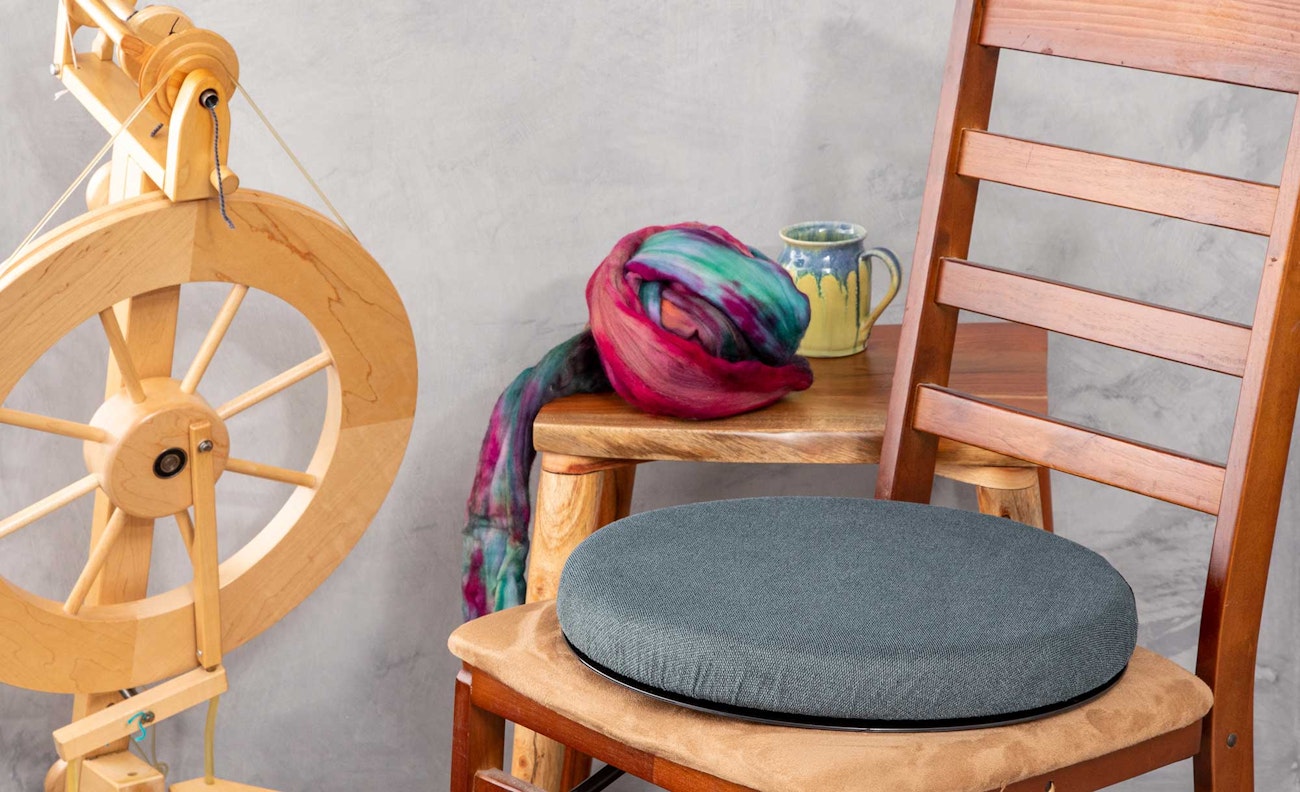1. Starting with a very lightweight or precious drop spindle
Fine woodworkers make exquisite drop spindles that weigh less than 10 grams, and if you’re excited about spinning, you might be excited to get one. If you spend time with handspinners, you may see people passing around delicate one-of-a-kind pieces and begin craving one yourself. Resist the urge—or if you do get one, don’t use it as your primary learning tool. Instead, get a solid drop spindle that weighs 1–3 ounces.
2. Beginning with spinning fiber that’s too fine
It’s tempting to start with the softest fiber you can find, especially if it appears in a beautifully dyed braid of top. That soft fiber can be too slick or too short to get a handle on at first. If you get frustrated trying to spin using ultrafine Merino top for your first yarn, pick up some nice toothy Corriedale or Romney wool roving. Some spinners do find success beginning with silk or linen or cotton, but for most of us, carded medium-staple wool is the easiest way to get started.
 Advice and encouragement from a teacher or friend can make all the difference in learning to spin. Photo from The Spinning Teacher, by Long Thread Media
Advice and encouragement from a teacher or friend can make all the difference in learning to spin. Photo from The Spinning Teacher, by Long Thread Media
3. Going it alone
Gone are the days when you had to squint at line drawings and decipher cryptic directions when you were learning to spin. Take a class! Watch a video! You’ll find a variety of spinning videos and workshops on Long Thread Media’s spinning courses page. Even if you don’t know a spinning teacher personally, you can take a free spinning lesson with Maggie Casey in The Spinning Teacher. And check our directory of spinning guilds so you can find a community of spinners.
4. Comparing your spinning with others
This may be the hardest mistake to avoid in the age of Instagram, but make a real effort to avoid skein envy. No matter how much smoother or finer or more consistent or well executed someone else’s yarn may be, remember this: All spinners get closer to their goals with practice. When you see spinning you admire, use it as inspiration, not reproach.
 A low-backed dining room chair or office-style chair can help you position your body for spinning without twisting your spine. Photo by Matt Graves
A low-backed dining room chair or office-style chair can help you position your body for spinning without twisting your spine. Photo by Matt Graves
5. Giving up
Spinning well requires persistence, and you can’t learn to do it in a day. I advise beginning spinners to practice for 15–30 minutes per day, then set it aside until the next day. There are two reasons for this: Your brain and fingers learn while you sleep, processing the day’s challenges to perform better tomorrow. And binge-spinning can lead to injury, so build up slowly and remember to stretch. No matter how hopeless you feel at the beginning, your spinning will improve if you keep at it. If you’ve tried to learn before and it didn’t take, your past experience will still help you this time. The likelihood of success depends mostly on continuing to try.
There are no spinning police; as long as you’re making yarn you like, you’re spinning the “right way.” Just get spinning, and proficiency will follow!
Anne Merrow is editorial director and a co-founder of Long Thread Media.
Originally published February 27, 2019; updated April 8, 2024.

